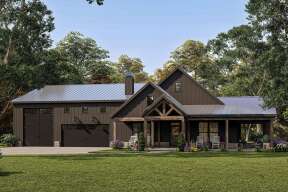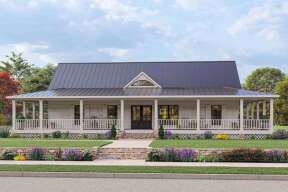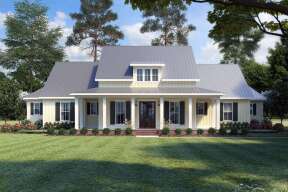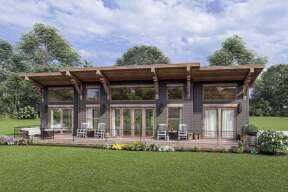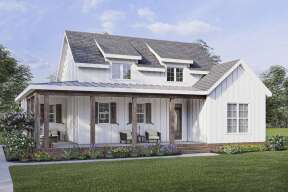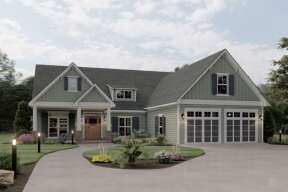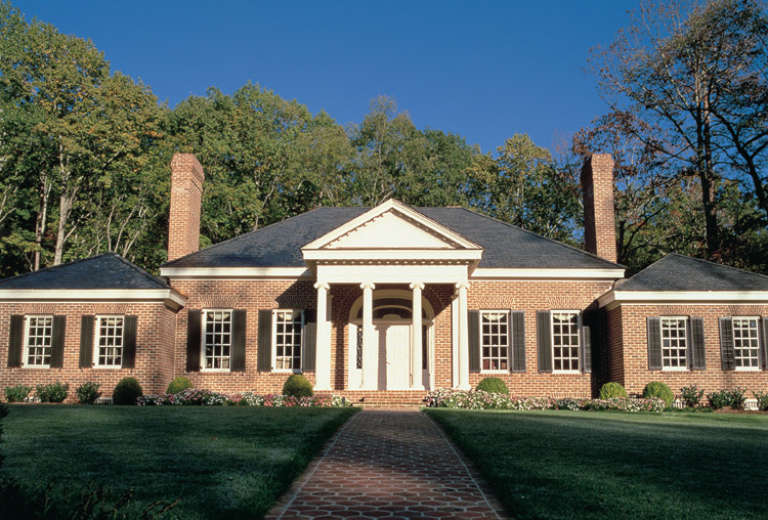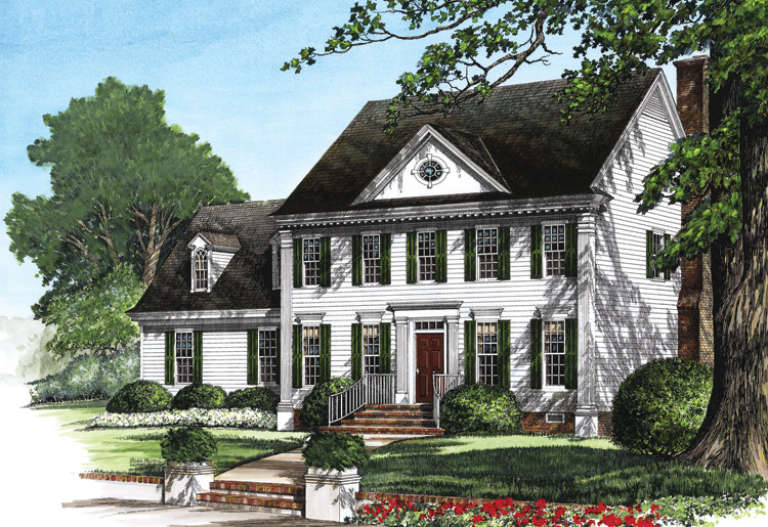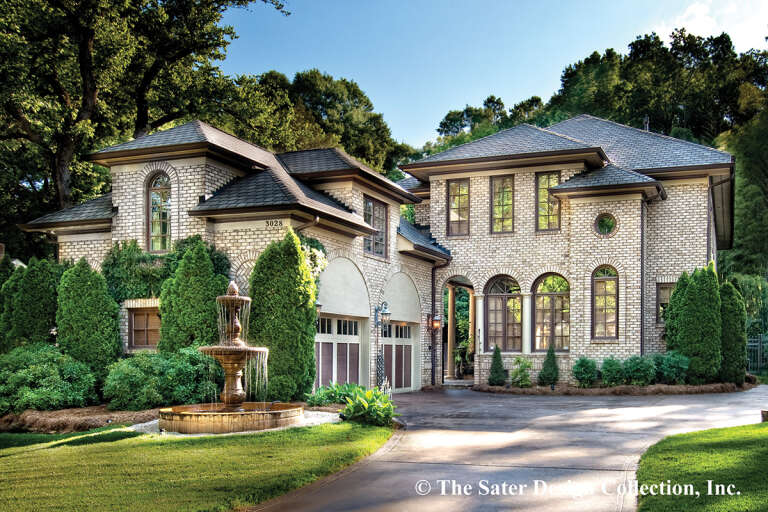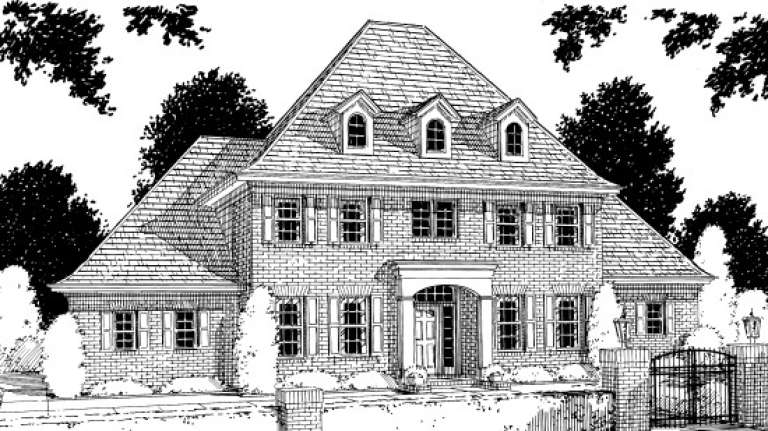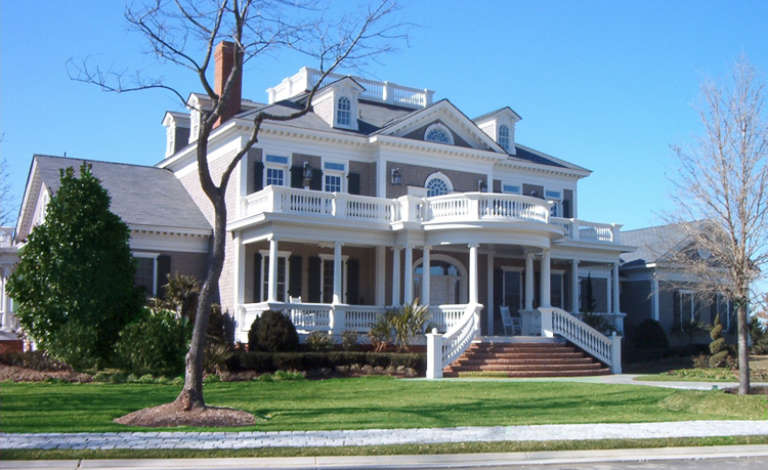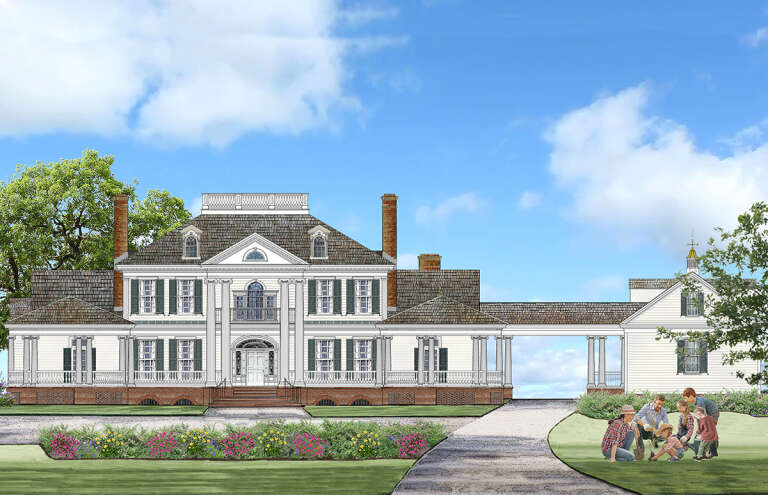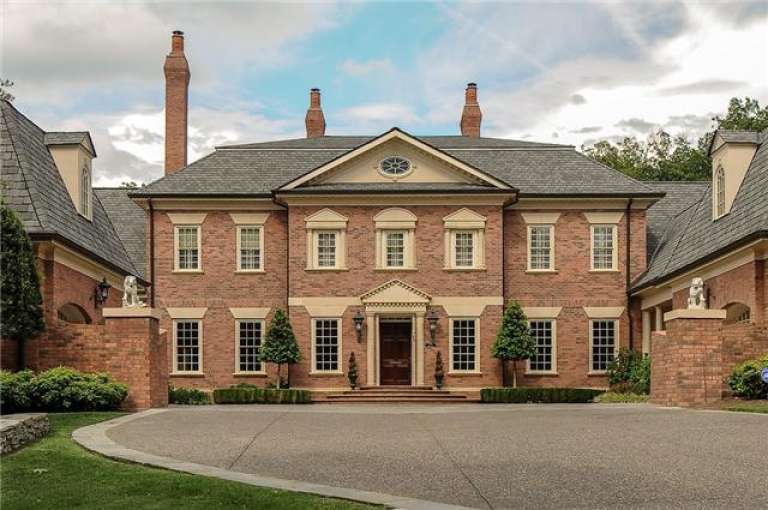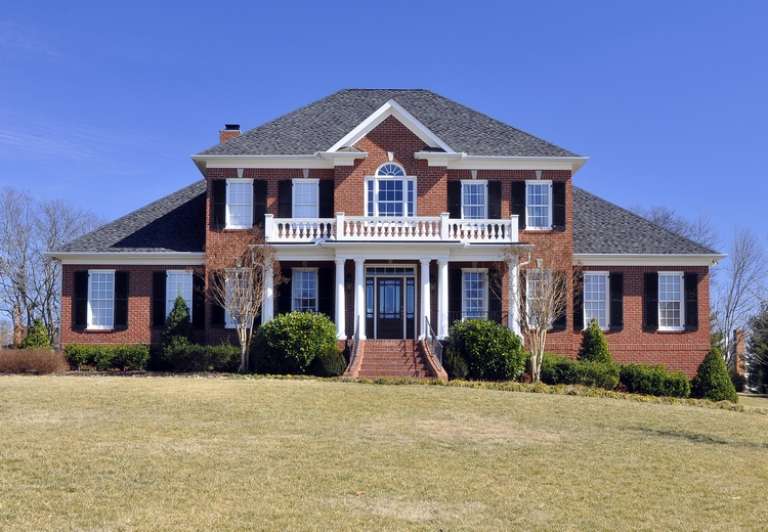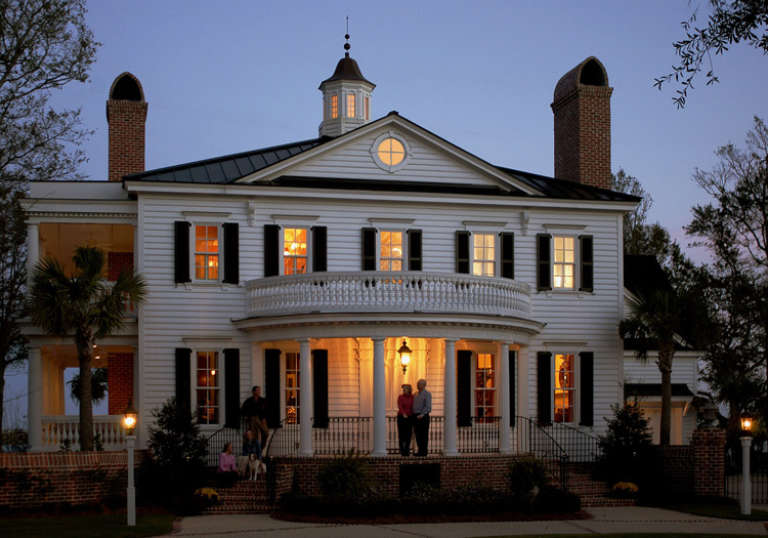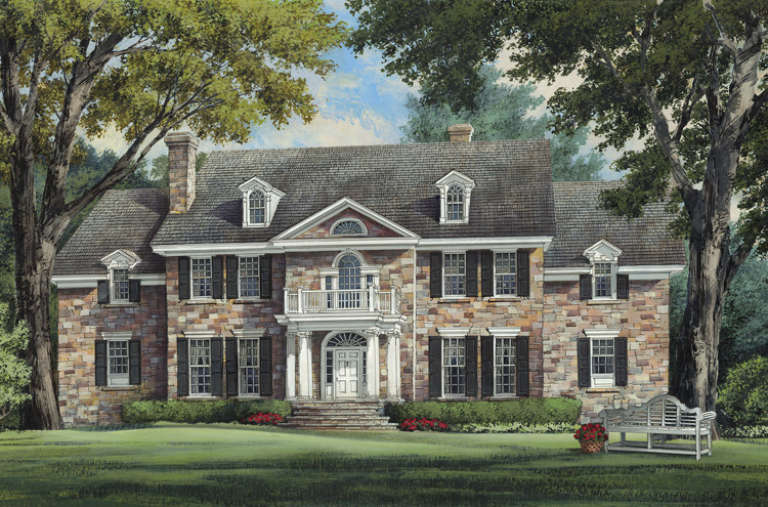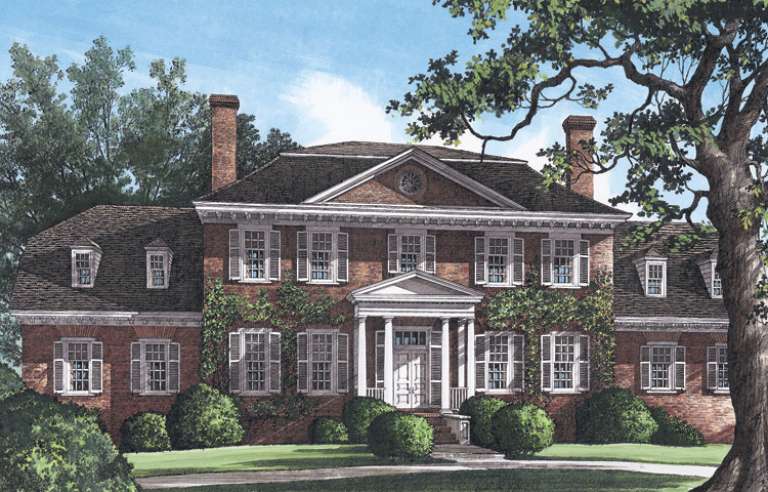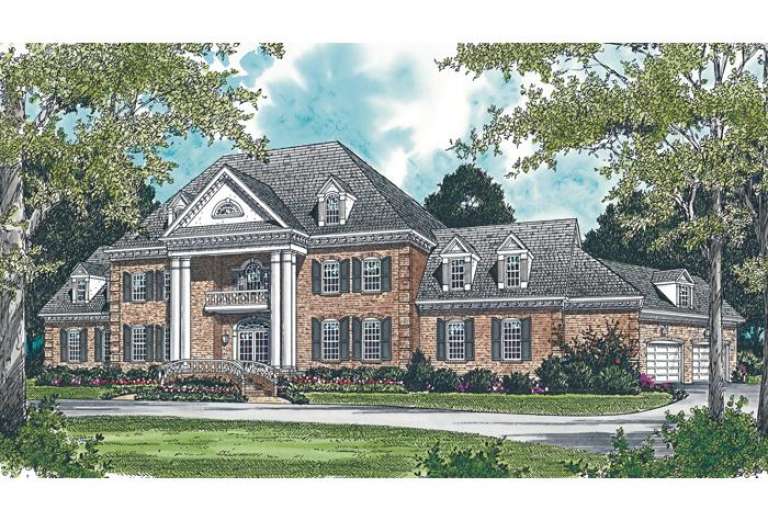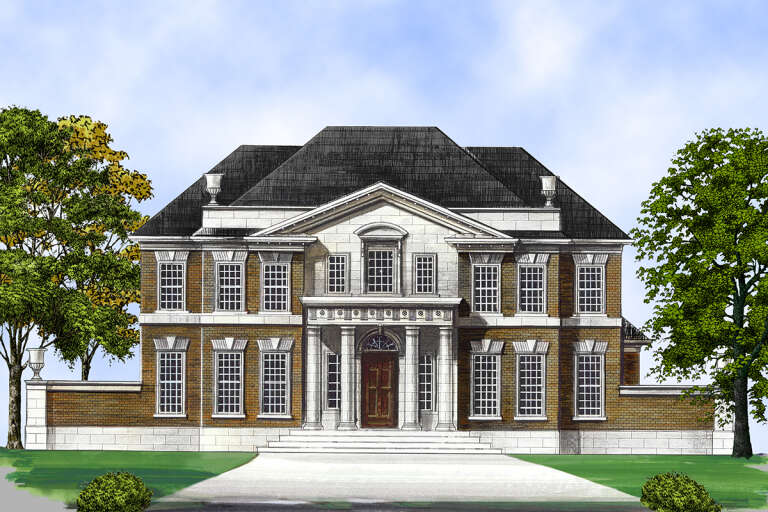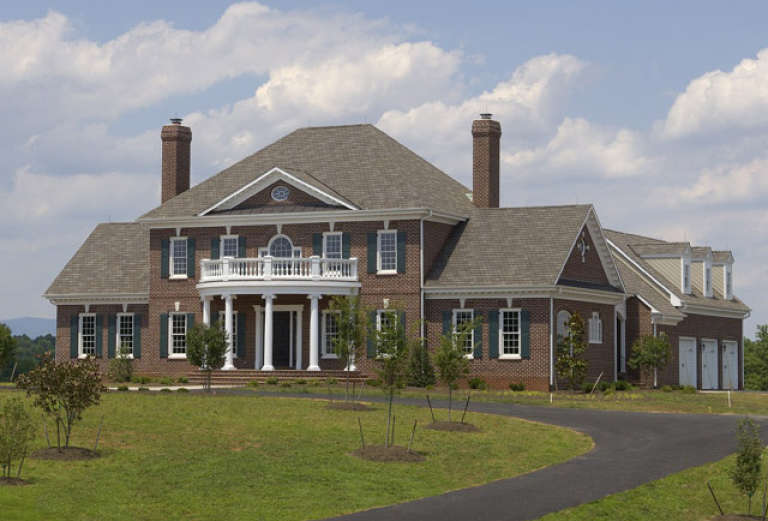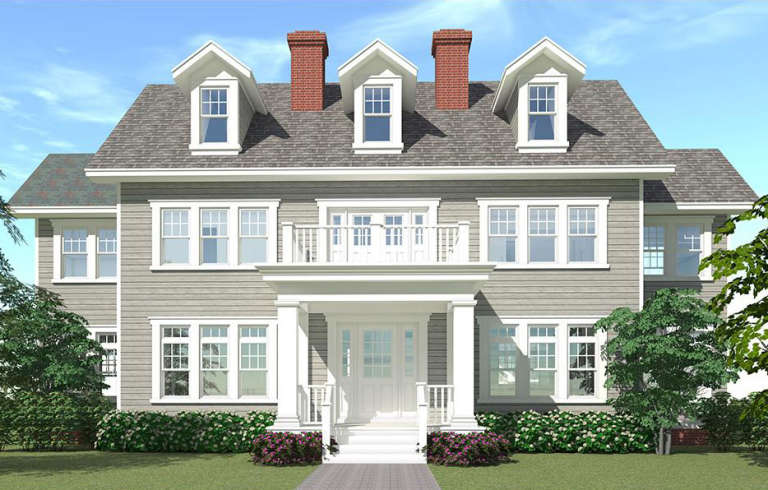77 Results
SORT BY
Georgian FAQ
What makes a Georgian house unique?
Georgian houses, born in the 18th and early 19th centuries, embody a unique blend of elegance, symmetry, and grandeur. This architectural style is popular because of its distinctive design elements that set it apart from other architectural styles. Here are several aspects that make a Georgian house unique:
- Classical Influences. Historic Georgian house plans were deeply influenced by the classical architecture of Greece and Rome via the Palladian style. Applying these classical elements, like columns, pediments, and decorative moldings, lent Georgian houses an air of timeless sophistication.
- Rigorous Proportions. Every element of a Georgian house follows strict rules of proportion. Whether it's a window's height and width or the columns' size and positioning, every detail follows an almost mathematical precision, ensuring the entire structure is harmonious.
- Symmetry and Order. The first and most striking element of Georgian house plans is their absolute commitment to symmetry. This design principle governs the placement of doors, windows, and even chimneys. Such symmetry exudes a sense of balance and formal elegance, characteristic of the period.
- Uniformity of Window Design. Georgian houses often feature multi-paned sash windows, usually six-over-six or nine-over-nine. The windows are more prominent on the first floor and become smaller on higher floors, maintaining the sense of proportion and balance that defines Georgian architecture.
- Grand Entrances. The entrance of a Georgian house is designed to make a statement. Centered on the front façade, it is often highlighted with decorative elements such as a transom window, ornate pilasters, and a pediment. This grandeur sets the tone for what to expect inside the home.
- Roof Design. The roofs of Georgian house plans are typically hidden behind parapet walls or have a shallow pitch, like hip roofs. This minimal roof visibility preserves the overall symmetry and simplicity of the building's façade.
Why did the Georgian style become popular?
The Georgian style became popular due to social, cultural, and economic factors that came together in Britain and its colonies during the 18th and early 19th centuries, especially in North America.
- Influence of Pattern Books. Architects and builders of the time often used pattern books, which provided standardized plans and design elements. These books helped spread the Georgian style widely, even to the colonies, making it a global phenomenon.
- Social Mobility. During the Georgian era, a burgeoning middle class emerged in Britain with newfound wealth and status. They desired homes that reflected their upward social mobility, and the Georgian style, with its grandeur and elegance, suited these aspirations perfectly.
- Influence of the Grand Tour. Many young men of the British upper class embarked on the Grand Tour, a traditional European trip, where they would often encounter the ancient architectural wonders of Greece and Rome. This experience influenced the architectural taste back home, with the Palladian style (itself inspired by classical Roman architecture) particularly favored, greatly influencing the Georgian style.
- Standardization and Mass Production. The Industrial Revolution, which began during the Georgian era, brought about new technologies and methods for mass production. This made construction materials like bricks and cut stone more affordable and accessible. Georgian architecture, emphasizing order, proportion, and symmetry, was ideally suited for this new environment, leading to widespread adoption.
- Association with the Monarchy. The style is named after four successive British monarchs - George I, II, III, and IV - who reigned from 1714 to 1830. This association with the monarchy added an air of prestige to the style.
Do Georgian houses have foundations?
Yes, Georgian houses do indeed have foundations. Like all structures, Georgian house floor plans require a sturdy foundation for stability and strength. The type of foundation used typically depended on the geographical region and the local construction practices when the house was built.
Why do Georgian houses have high ceilings?
Georgian houses are renowned for their high ceilings, a feature driven by several practical and aesthetic considerations of the era.
- Thermal Comfort. High ceilings allow hot air to rise, keeping the living areas below cooler. This was particularly useful in an era before modern heating and cooling systems, contributing to a more comfortable indoor environment during warmer months.
- Aesthetics and Proportions. High ceilings lend the interiors a grand and spacious feel, complementing the overall architectural style. The Georgian style is based on classical proportions; high ceilings were vital to achieving this balance and symmetry.
- Status Symbol. High ceilings were also a sign of wealth and status. The ability to construct a house with high ceilings often indicated the owner's affluence, as it required more mate owners and thus increased the construction cost.
- Light and Space. Higher ceilings allow for more oversized windows, letting in more natural light. This enhances the sense of space and can significantly improve the ambiance of a room. This feature would have been particularly advantageous given the lack of electric light during the Georgian era.
- Architectural Detailing. High ceilings provided more space for elaborate architectural details, such as cornices, friezes, and ceiling roses. Such elements were a prominent feature of Georgian interior design, contributing to the style's grandeur and elegance.
What is the difference between Georgian and Colonial?
When discussing Georgian and Colonial architectural styles, it's essential to acknowledge that "Colonial" is a broad term encompassing a variety of architectural styles prevalent in the American colonies from the 16th to the 19th centuries. The Georgian style is, in fact, a subset of Colonial architecture, enjoying particular popularity in the American colonies during the 18th century.
However, sometimes, the term "Colonial" can often be more specifically related to "Colonial Revival," a movement in the late 19th and early 20th centuries in the United States that sought inspiration from the architectural styles of the early American colonial period.
Georgian house floor plans are distinguished by their symmetry, classical proportions, and decorative elements such as pediments and pilasters. Typical Georgian homes feature a square, symmetrical shape with a paneled front door at the center of the structure, evenly spaced windows on either side of the entrance, multi-pane windows, decorative crown moldings, and brick or stone exteriors.
Colonial Revival architecture borrows from the entire history of American colonial architecture, encompassing Georgian but also earlier styles such as the First Period (late medieval) and Federal. Colonial Revival houses, like Georgian, are typically two to three stories, boasting a symmetrical and rectangular design.
Georgian architecture presents a more specific style with well-defined characteristics, emphasizing symmetry, classical proportions, and grandeur. It's part of the broader category of colonial architecture but is distinct from the later Colonial Revival style, which draws from a broader array of colonial architectural traditions. However, both types focus on symmetry and classical design elements.
How can you tell the difference between a Victorian and a Georgian house?
Georgian and Victorian houses, both iconic architectural styles, are very different homes. While both are exquisitely decorated inside and out, a critical differentiator is the principle of design, as Georgian architecture emphasizes symmetry, balance, and proportion. At the same time, Victorian homes are recognized for their ornate detailing and complex shapes.
Regarding symmetry, Georgian houses generally display a square, balanced façade with a paneled front door centered and windows evenly spaced on either side. Victorian homes, however, frequently exhibit asymmetrical façades and irregular floor plans.
Windows in Georgian-style house plans are usually multi-pane sash windows, often configured in a six-over-six or nine-over-nine grid, and they are generally more significant on the lower floors, becoming progressively smaller on higher floors to maintain a sense of proportion. Conversely, Victorian homes typically present one-over-one or two-over-two sash windows, which are often larger and less formal than their Georgian counterparts.
Roof designs also differ significantly between the two styles. Georgian homes usually feature hipped or side-gabled roofs, often concealed behind a parapet wall. In contrast, Victorian homes showcase steeply pitched roofs that can be intricate, integrating elements like towers, turrets, and dormer windows.
Classical influences of Greece and Rome heavily inspired Georgian architecture, often manifesting in features like pediments, columns, and detailed cornices. On the other hand, While borrowing from various architectural periods, Victorian architecture is most distinguished by its intricate ornamentation, boasting decorative elements such as carved stone, wrought iron, and wood trim in elaborate patterns.
While Georgian house plans convey a sense of balance, symmetry, and classical grandeur, Victorian homes embody an aesthetic of intricate detailing, diverse materials, and complex layouts. Each style serves as a unique testament to its era, reflecting the architectural and cultural evolution of the period.


